
Osteochondrosis is now rightly considered a "disease of the century", as it most often affects people whose work does not require increased physical activity.
In most cases, changes in cartilage and bone tissue are observed in people of working age - up to 40 years.
The disease can affect different parts of the spine, and the second most common is osteochondrosis of the cervical spine.
What is it?
Osteochondrosis is a degenerative disease of the articular cartilage and adjacent bone tissue.
Previously the term was applied to a large group of osteoarticular diseases, but now it is only used for degenerative diseases of the spine.
Compared to other parts of the spine, the cervical region is the most mobile and has many nerve and vascular formations. The structure of the vertebrae is small, as well as the fact that they are surrounded by a rather weak muscular corset.
This anatomical structure predisposes to the development of osteochondrosis, the severity of clinical manifestations of which depends on the nature of the changes in the intervertebral discs and the degree of their destruction.
The reasons for the development of the disease
The main and most common cause of osteochondrosis of the cervical spine is a sedentary lifestyle.
Due to a lack of physical activity with a sedentary and sedentary lifestyle:
- metabolic processes are disturbed;
- the level of salts in the bloodstream and lymphatic fluid increases; The salts of
- are deposited in the cervical spine, kidneys and liver.
Damage to the cervical vertebrae is mainly caused by a lack of nutrients in the intervertebral discs. Therefore, the main reasons for the appearance of cervical osteochondrosis also include inadequate and unbalanced nutrition.

Risk factors
There are many risk factors for cervical osteochondrosis.
The most common factors are:
- heredity
- ;
- age-related changes;
- injuries of the cervical spine;
- hypothermia;
- hormonal disturbances which lead to metabolic disturbances;
- certain autoimmune diseases that damage cartilage tissue (systemic lupus erythematosus, rheumatism).
Why is it dangerous?
Not only the spinal cord and nerve roots pass through the cervical column, but also the vertebral artery, which is responsible for supplying blood to the back of the brain, the elongated medulla and the cerebellum.
Therefore, with cervical osteochondrosis, this artery is compressed and, as a result, cerebral circulation is impaired.
In extremely advanced cases, compression of an artery and adjacent blood vessels and nerve plexuses can lead to consequences such as:
- lack of coordination;
- hearing and vision loss;
- race.
If the disease is not cured at the initial stage, it can lead to complications such as: protrusion of the intervertebral disc or herniated disc.
Progression of the disease
Cervical osteochondrosis, like osteochondrosis in other parts of the spine, develops in stages. There are 3 stages in the development of the disease.
1 degree
Characterized by the onset of destruction of intervertebral discs.
Cracks form in the fibrous ring, the strength and elasticity of the disc is disturbed, its height decreases, which compresses the nerve roots.
A characteristic aching pain appears. Sometimes in stage 1 (preclinical) such pain may be absent, and osteochondrosis occurs with moderate discomfort in the neck.
2nd degree
If 1st degree osteochondrosis has not been treated or if treatment has not been effective, a chronic condition develops, which is 2nd degree osteochondrosis.
The pain becomes constant, destruction and compaction of the intervertebral disc continues and leads to minor dislocations of the cervical vertebrae.
With cervical osteochondrosis at this stage, falling head syndrome may develop. This syndrome is characterized by severe pain and the person must keep the head in a fixed state to reduce the pain.
3rd degree
Grade 3 cervical osteochondrosis is accompanied by the following symptoms:
- headache;
- nausea;
- dizziness;
- neck "lumbago";
- altered sensitivity of the upper limbs.
The fibrosus ring is almost destroyed, which leads to complications of osteochondrosis - protrusion of the intervertebral disc or intervertebral herniation.
In the 3rd stage of osteochondrosis, the intensity of pain may decrease, because the affected cartilage tissue in the intervertebral disc simply does not exist, which means there is nosource of pain, but the pinching of the nerve roots remains, so the pain does not go away completely.
Signs and symptoms
There are many signs of this disease. And they depend on the vertebrae damaged by this disease.
The typical syndromes of cervical osteochondrosis are:
- radicular syndrome
- ; vertebral artery syndrome
- ; cervical migraine syndrome
- ; Hypertensive syndrome
- .
All of these syndromes are accompanied, first of all, by different types of pain.
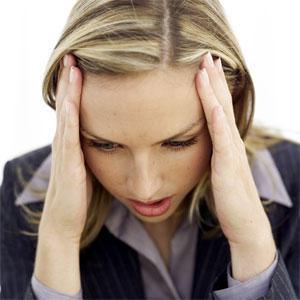
If we consider the syndrome of the vertebral artery, then the headache manifests itself here already at an early stage of the development of the disease.
In this case, the pain attacks may be accompanied by:
- dizziness;
- unsteady gait;
- visual symptoms (appearance of fog in front of the eyes, reduced visual acuity, etc. ). fainting (with sudden movements of the head).
In hypertensive syndrome, an increase in intracranial pressure is determined.
The headache is more of a flashing character, may be accompanied by nausea and vomiting. With exacerbation of cervical osteochondrosis, an increase in temperature and an increase in ESR can be observed.
When the spinal roots are compressed ("radicular syndrome"), the following neurological symptoms may appear:
- severe pain in the neck (neck pain);
- neck pain that spreads to the forearm and humerus (cervicobrachialgia);
- pain in the arm;
- cracking or cracking sensations in the neck when turning the head;
- pain "radiating" to the ear, which occurs most often after a long stay in an awkward position or sudden movement;
- pain or lumpy feeling in the throat, breathing problems;
- numbness in the hands and tongue;
- sensation of swelling of the tongue;
- severe weakness;
- hearing and visual impairment;
- tinnitus;
- general deterioration of health.
In the syndrome of "cervical migraine", irritation of the sympathetic ganglia is observed, which leads to a decrease in the reactivity of the brain vessels and impaired blood circulation.
As a result, hypertension can develop, often accompanied by:
- plugged ears;
- tachycardia;
- noise in the head;
- ringing in the ears.
When the arteries supplying the spinal cord are compressed, a stroke can occur.
Violation of blood circulation in the brain with osteochondrosis can lead to:
- oxygen deficiency of brain cells;
- mental disorders (depression, panic attacks);
- signs of epilepsy, such as short-term loss of consciousness and whole body tension - these are often mistaken for signs of epilepsy.
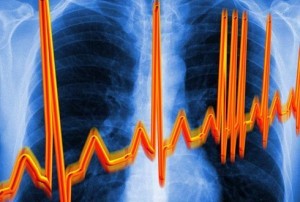
A very common sign of cervical osteochondrosis is changes and disturbances in the rhythm of the heart, for example, extrasystole or arrhythmia.
These symptoms are very common among drivers and office workers.
Due to a sedentary lifestyle, changes occur in the intervertebral discs of the cervical and thoracic spine, which leads to disturbances in the work of the heart.
In most cases, until osteochondrosis is cured, it is virtually impossible to get rid of the irregular heartbeat.
Edema under the eyes may also indicate osteochondrosis of the cervical spine.
Most often they depend on the position of the head during a night's sleep, disappear during the day and combine with headache, dizziness, heaviness in the head, etc.
Vegetovascular dystonia is another of the most common diseases associated with this disease.
This is a consequence of the pinched vascular arteries that run along the sides of the spine.
Diagnostic methods
The preliminary diagnosis is made by a neurologist during the initial examination of the patient. More recently, the doctor had to make a diagnosis by only performing an external examination of the patient and sending him for an x-ray.
But, unfortunately, it is impossible to see the full picture of the development of the disease on an x-ray.
Currently available exams such as computed tomography and magnetic resonance imaging, with which you can fully assess the stage of development of the disease.
Once the diagnosis has been made, the patient is referred to a doctor specializing in this field.
Which doctor treats?
Treatment is carried out by a narrow specialist - a vertebrologist or a vertebroneurologist.
Treatment of cervical osteochondrosis
The severity of the main clinical symptoms is taken as the basis of treatment for cervical osteochondrosis.
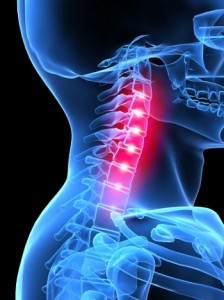
In the cervical spine, the symptoms are mainly associated with the compression of blood vessels and nerve endings, therefore, during treatment, the edema is first removed and blood circulation is restored.
There are many treatment methods used in the treatment of osteochondrosis of the cervical spine.
The most effective treatment is complex, which is a combination of several conservative treatment methods.
The complex treatment of cervical osteochondrosis can include the following traditional and non-traditional methods: drug therapy, massage, acupressure, manual therapy, physiotherapy, acupuncture, homeopathy, folk remedies, etc.
The main stages in the treatment of osteochondrosis are the same for all locations of this disease:
- You must first relieve the pain.
- Then the swelling will be removed.
- At this point it is necessary to normalize the blood circulation.
- Strengthening the muscle corset.
- Improved nutrition and tissue regeneration.
Only a team of good specialists can choose the most suitable therapy, which includes neurologist, physiotherapist, massage therapist, surgeon and spinal neurologist.
Like any disease, cervical osteochondrosis should be treated at the earliest stage of its onset. If you do not start the process, you can completely cure osteochondrosis at this point.
Unfortunately, stages 2 and 3 of cervical osteochondrosis are accompanied by complete or partial destruction of the intervertebral discs, therefore, these stages are characterized by a very long recovery process.
First aid
How to relieve pain during an exacerbation?
In case of severe pain, you should take an analgesic in your medicine cabinet: these may be pain relievers. You can also apply a pepper bandage for pain relief.
Diuretics may be taken for swelling. Rubbing the neck with pain relieving ointments can help.
You can also use aneedle applicatorfor pain, which:
- relieves back pain;
- reduces muscle spasms;
- stimulates the work of internal organs;
- normalizes blood circulation.
Physiotherapy in exacerbations is contraindicated, as well as warming up, since these effects can lead to serious complications.
After relief of the acute pain, it is necessary to urgently consult your doctor for advice.
Drug treatment
Drug therapy most often begins with injections (in case of exacerbation), then proceeds to tablets and suppositories in combination with topical application of ointments and gels.
Anesthesia during drug therapy is carried out with steroidal anti-inflammatory drugs.
Drugs that restore cerebral circulation should be prescribed.
Muscle relaxants may be prescribed for abnormal muscle tension. For a more effective treatment, vitamins are taken in therapeutic doses and trace elements.
In case of intervertebral hernia, surgery is often recommended and the attending physician may suggest surgery.
Massage and self-massage
This method works well with physiotherapy and physiotherapy. You can take a massage course both in any medical institution and by contacting private practices.
Massage is necessary for cervical osteochondrosis to strengthen muscles and relieve tension in the neck.
The task of the masseur is to remove harmful metabolic products, increasing the flow and inflow of blood to the diseased area, as well as to remove the spasm from the pathological area.
The main techniques used by neck massage specialists are:
- stroking;
- press;
- friction;
- vibration;
- kneading.
The self-massage technique can be performed using the following techniques:
- caresses (movements should be gentle, without too much effort, forming folds)
- kneading (deep impact on the muscles, gripping in the fold, pressing and pushing); Vibration
- (vibratory impact by beating, shaking, tapping).
The self-massage should always end with caresses. During the vibrations, you can use a massager.
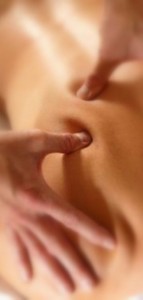
Acupressure massage
Acupressure massage well relieves headaches with exacerbation of cervical osteochondrosis, helps to combat pressure peaks, normalizing them.
Acupressure regimen:
- Impact on the feng fu point, located under the occipital protuberance, for 1 minute.
- Impact on the feng chi point, which is close to the mastoid processes of the skull.
- Impact for 1-1. 5 minutes on the ya-men point (located three fingers away from the feng fu point).
- Sedation for 1 to 1, 5 minutes on the da-chzhui point (7th cervical vertebra).
After acupressure, you should lie down for a few minutes, as you may feel mildly dizzy.
Manual therapy
Manual therapy helps to cope with acute and chronic pain, also increases range of motion and improves posture well.
The main methods of manual therapy for osteochondrosis of the cervical spine:
- Relaxing and segmental massage.Used to warm muscles and relieve tension.
- Mobilization.Influences aimed at restoring joint function by traction.
- Handling.A strong push directed towards the pathological areas of the patient. The intervention is accompanied by a characteristic crunch (return of the joint to its normal position).
A specialist practicing manual therapy should master these techniques. Otherwise, any mistake may result in injury.

Acupuncture
Acupuncture helps release cortisol into the bloodstream. This hormone has a pronounced anti-inflammatory effect.
Acupuncture is performed by acting on points close to the inner edge of the scapula. The needles are inserted to a depth of 1 to 2 cm and left to act for 10 to 30 minutes.
Homeopathy
Drug treatment has many unwanted side effects, so homeopathy can be a valid substitute for treatment without unwanted consequences.
Nutritional characteristics
Foods should be rich in calcium and magnesium.
These trace elements are found in fish and seafood, nuts, legumes and dairy products.
Often osteochondrosis of the neck can be accompanied by atherosclerosis. In this case, a strict diet is recommended.
The diet is prescribed for 3-4 months. It is necessary to limit the consumption of all foods containing cholesterol. These include animal fats, fatty meats, fatty dairy products, etc. You should also limit or exclude the intake of salt, sugar, and flour products.
It is recommended to give up bad habits (smoking, alcohol, etc. ).
Cervical osteochondrosis and alcohol are interconnected. The fact is that, getting into the blood, alcohol destroys cells, aggravating the already impaired blood circulation in osteochondrosis.
Therefore, you should limit it to a minimum, and during an exacerbation completely stop drinking alcohol.
Disease prevention
To prevent cervical osteochondrosis, the following rules are recommended:
- sleep should be on a firm mattress and a low pillow: the angle of flexion of the neck should not be more than 15 degrees;
- take a hot shower every day for at least 10 minutes;
- visit the sauna and public baths as often as possible: the heat helps relieve neck spasms;
- indulge in aerobic activity and regular low-pace walks;
- go swimming;
- after 25 years, avoid impacts on the spine (jumping, running);
- when working sedentary, be sure to take five minute breaks every hour;
- regular yoga practice can prevent any manifestation of cervical osteochondrosis;
- refrain from going to the gym, as weight training can cause the development of cervical disc protrusion;
- Physical exercise as a prophylaxis against osteochondrosis of the neck helps strengthen neck muscles, relieve tension.
Frequently asked questions
What to do during pregnancy and how to treat it?
Often it is during pregnancy that the first symptoms of cervical osteochondrosis appear.
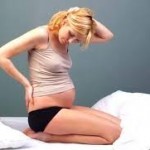
This is due to altered hormonal levels and softening of the vertebrae, as well as a shift in the center of gravity and excessive strain on the spine.
Treatment of osteochondrosis in pregnant women is quite complicated, as it is mainly limited by the drug method aimed at relieving pain.
You can apply natural ointments or resort to traditional medicine.
Any influence on the neck area (warm-up, exercise, etc. ) during pregnancy is strictly prohibited.
Does this happen in children and adolescents?
In children and adolescents, cervical osteochondrosis develops due to congenital or acquired functional insufficiency of the cartilage tissue.
It results in complaints of headache, fatigue, dizziness, and fainting.
Is it possible to heat the neck area?
Warming the neck with cervical osteochondrosis is strictly prohibited, especially at the stage of exacerbation of the disease, since warming can lead to increased edema and vasodilation of the brain.

How to sleep properly?
Sleep on a flat, hard bed with an orthopedic mattress.
The recommended and most comfortable position is lying on your side with your shoulder resting on the mattress and your head resting on a small pillow.
Using an orthopedic pillow helps relax the muscles of the cervical spine, reduces irritation of nerve endings, which prevents headaches and insomnia.
Are physical activities and sauna allowed?
As a preventive measure and at the 1st stage of cervical osteochondrosis, it is recommended to practice physiotherapy, swimming exercises.
Lifting weights, working hard, training in gyms is strictly prohibited.
A visit to baths and sauna is also recommended only for the prevention of cervical osteochondrosis and in the initial stage of the disease.
Notice
"I would like to share with my brothers in misfortune how to deal with cervical osteochondrosis. A few years ago I had back pain. A visit to the doctor, the diagnosis was cervical osteochondrosis. Lots ofthings were tried from the treatment: physiotherapy, manual therapy and massage. But there was always only temporary relief, besides, all these procedures are very expensive. I had to start to study the problem in depthAnd so I decided to give swimming a try. It turns out that swimming is widely used for the prevention and treatment of cervical osteochondrosis, as it relieves the tension of the neck muscles. Once a week inpool and grief do not know. "
"Due to my overwork, I could not find time to see a doctor. And my relatives advised me to treat my neck pain with a warm-up, herbal compresses, ointments in different ways and other home remedies. that the neck stopped moving at all! I stayed home for more than two weeks, and even then recovered for a long time. Therefore, my advice to everyone isto see a doctor as soon as your neck tightens and hurts! So you will save time and not lose your health. "

























